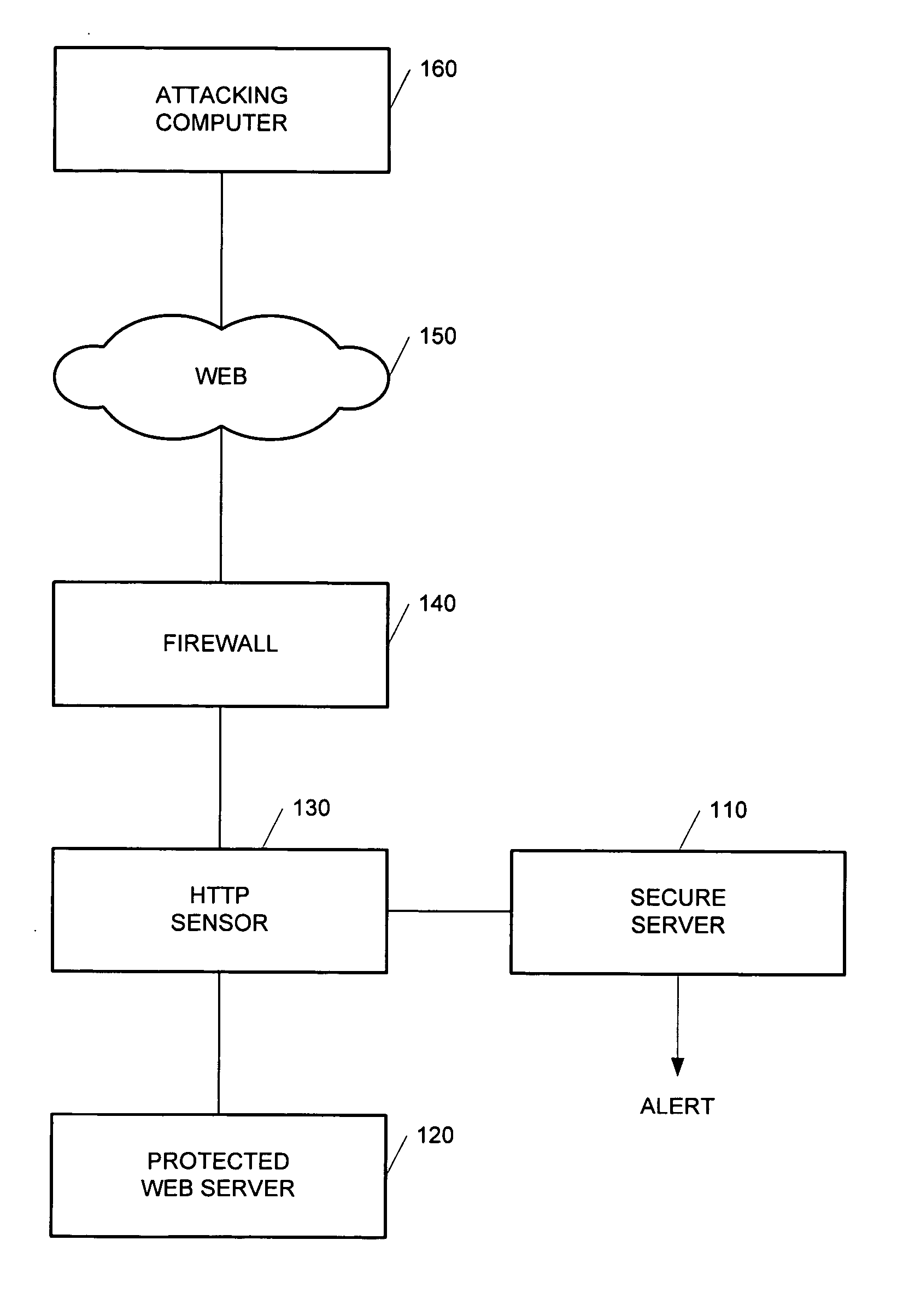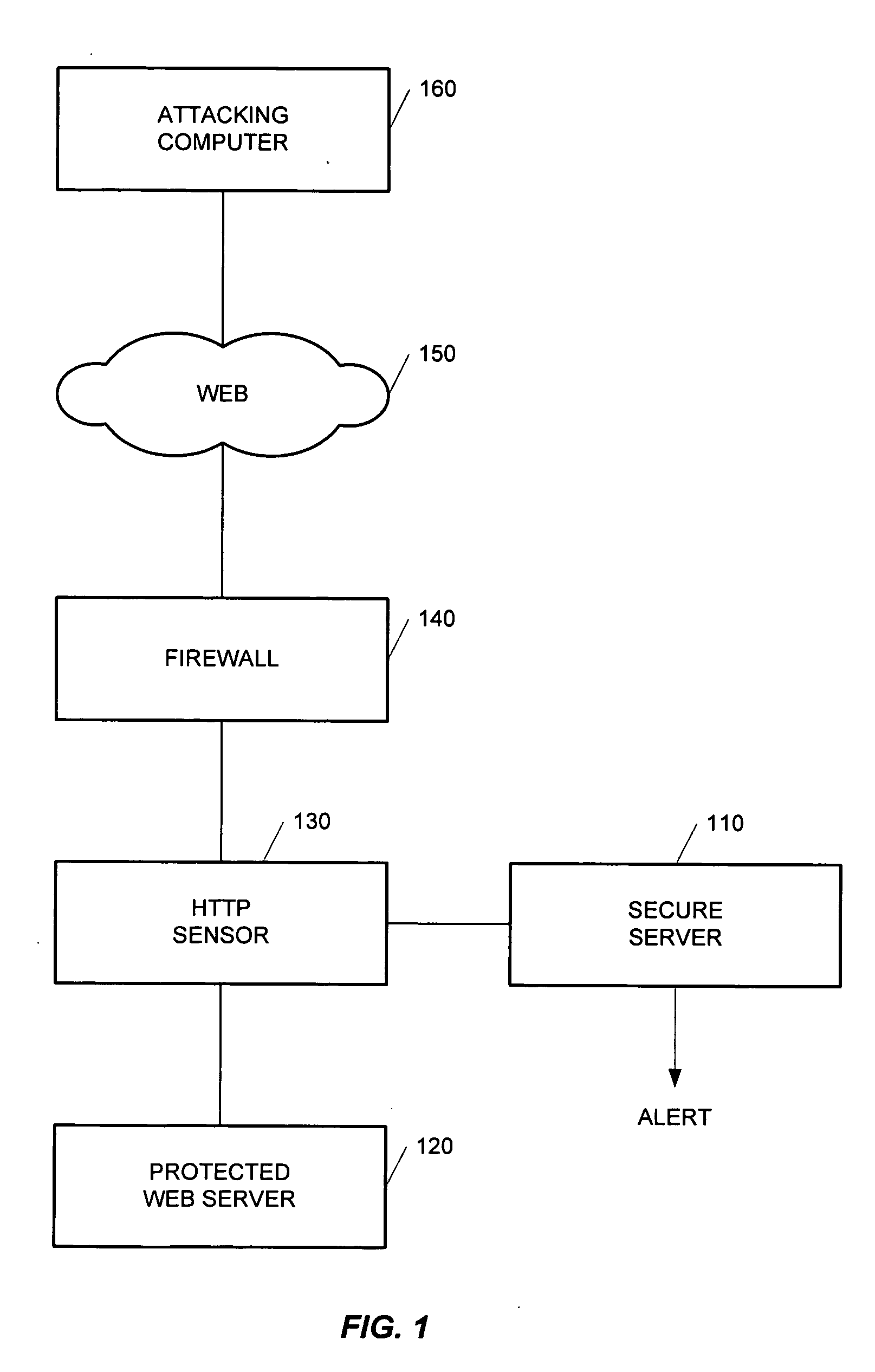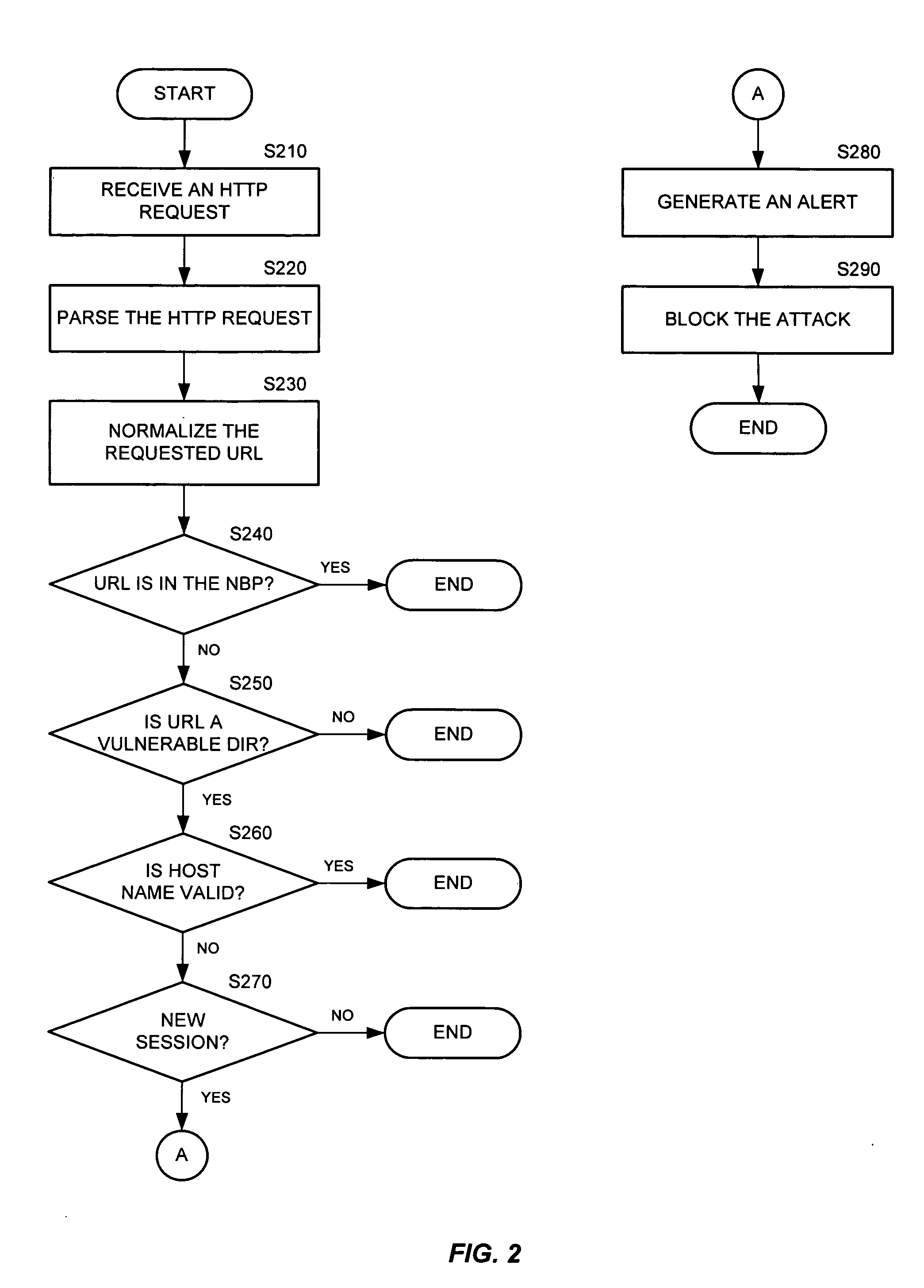Method and apparatus for high-speed detection and blocking of zero day worm attacks
a technology of worm attacks and detection methods, applied in the field of application and network security protection, can solve problems such as the vulnerability of web applications and web sites to malicious, irresponsible or criminally minded individuals or organizations, and the threat of several kinds of malicious worms on web servers
- Summary
- Abstract
- Description
- Claims
- Application Information
AI Technical Summary
Benefits of technology
Problems solved by technology
Method used
Image
Examples
Embodiment Construction
[0032] A detailed description of exemplary embodiments will now be given referring to the accompanying drawings.
[0033] A zero day worm attack is referred hereinafter to the initial appearance of a new or a revised Web worm and to the Web attack committed by such a worm. The present invention detects zero day worm attacks by comparing a single request sent from an attacking computer (or server) to a predefined profile of a protected Web application. The detection of zero day worm attacks is performed without affecting the overall performance of the protected Web applications.
[0034] The detection of zero day worm attacks is based on several common characteristics that are distinguishable from those used by intrusion detection security systems, such as application level security systems. The present invention utilizes the following characteristics to detect an attack: (a) zero day worm attacks use default access points to connect the victim server; typically, such access points are e...
PUM
 Login to View More
Login to View More Abstract
Description
Claims
Application Information
 Login to View More
Login to View More - R&D
- Intellectual Property
- Life Sciences
- Materials
- Tech Scout
- Unparalleled Data Quality
- Higher Quality Content
- 60% Fewer Hallucinations
Browse by: Latest US Patents, China's latest patents, Technical Efficacy Thesaurus, Application Domain, Technology Topic, Popular Technical Reports.
© 2025 PatSnap. All rights reserved.Legal|Privacy policy|Modern Slavery Act Transparency Statement|Sitemap|About US| Contact US: help@patsnap.com



